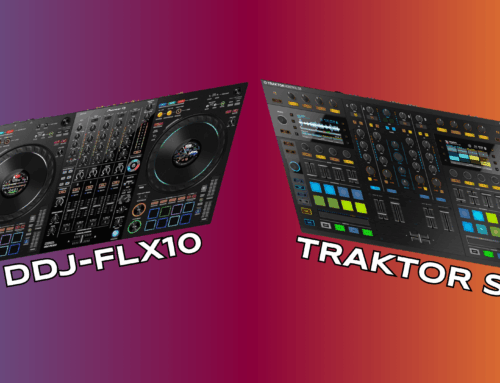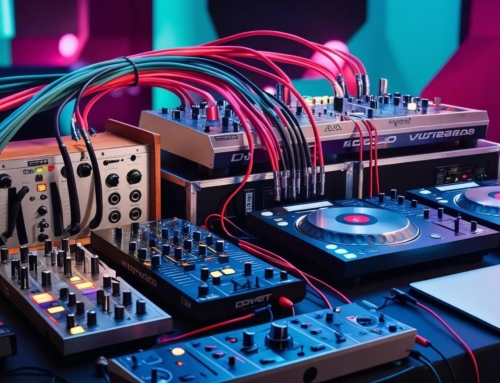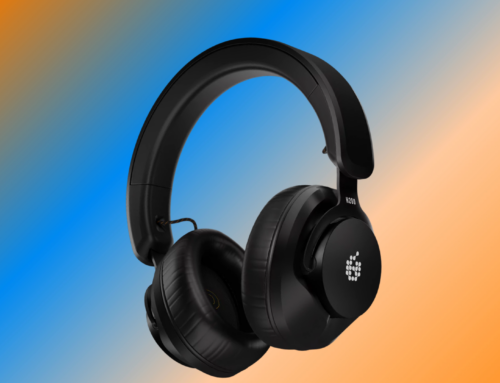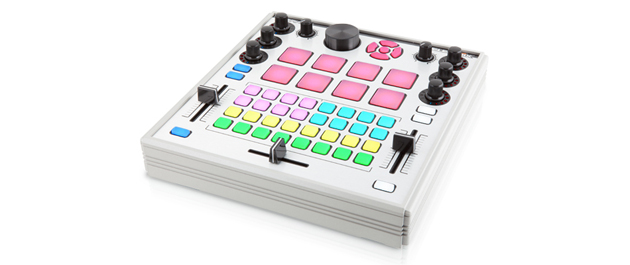 The Electrix Tweaker is an enigma. It isn’t quite laid out like a traditional DJ controller, with two jogwheels and a mixer section. It doesn’t quite have the form of an Ableton controller you’d expect from something like the Novation Launchpad or Akai APC40. So, what’s it for? That is entirely up to you.
The Electrix Tweaker is an enigma. It isn’t quite laid out like a traditional DJ controller, with two jogwheels and a mixer section. It doesn’t quite have the form of an Ableton controller you’d expect from something like the Novation Launchpad or Akai APC40. So, what’s it for? That is entirely up to you.
The Tweaker is, at its core, nothing more than a hodgepodge of well-constructed buttons, pads, knobs, and faders. The layout is not divided by function (i.e. mixer, transport, effects, etc.) but rather by the style of input. The front panel only has two words on it – “Electrix” and “Tweaker” – meaning no one can tell you what to do with any of those controls. There are two included plastic overlays just in case you want some direction (one for Traktor and one for Ableton), but complete creative control is afforded to anyone with the time to sit down and program the device themselves.
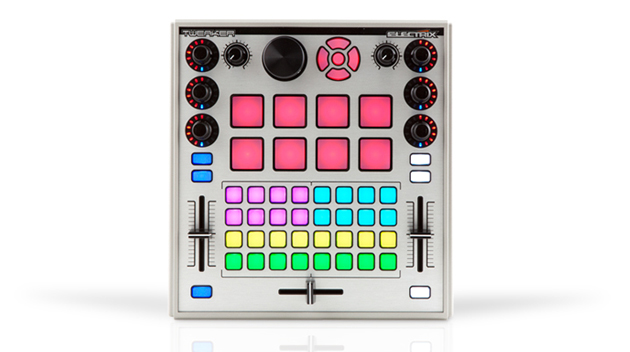 I have mixed feelings about this philosophy of controller design. On the one hand, I want all my devices to have a clearly defined purpose so that it serves a specific role in my workflow out of the box. On the other hand, I recognize that with a clean slate of buttons, knobs, and faders, I can make that controller occupy whatever niche I want. It just takes that extra time, planning, and most importantly button memorization. In other words, if this is an auxiliary controller, you really have to know exactly what you want from it in order to make it work for you. If this is your primary controller, the included overlays help tremendously, but the unconventional layout may take some getting used to.
I have mixed feelings about this philosophy of controller design. On the one hand, I want all my devices to have a clearly defined purpose so that it serves a specific role in my workflow out of the box. On the other hand, I recognize that with a clean slate of buttons, knobs, and faders, I can make that controller occupy whatever niche I want. It just takes that extra time, planning, and most importantly button memorization. In other words, if this is an auxiliary controller, you really have to know exactly what you want from it in order to make it work for you. If this is your primary controller, the included overlays help tremendously, but the unconventional layout may take some getting used to.
In terms of build quality, I actually quite like the Tweaker. It has a cute little DIY aesthetic, yet it’s built very strong out of professional-grade materials and certainly doesn’t feel flimsy. I also like the four little removable plastic feet that are included to lift the Tweaker a bit off the table and bring it up to a more usable height. Another bonus is that it runs completely off USB power, meaning you don’t have to throw away another precious spot on your power strip. The Tweaker also employs my favorite type of rotary encoder, which I previously encountered on the award-winning Reloop products.
 The pads are also nice and sensitive and have great velocity detection – which really comes in handy for using the pads to control effects. Pad-based effect control is probably one of my favorite features of the factory-stock mappings included with the Tweaker. Pads can be used not only to turn effects on and off, but to control specific effect parameters as well as dry/wet values. This is a fun and interesting way to experiment with your audio, and the excellent pad sensitivity and resolution is to thank for that.
The pads are also nice and sensitive and have great velocity detection – which really comes in handy for using the pads to control effects. Pad-based effect control is probably one of my favorite features of the factory-stock mappings included with the Tweaker. Pads can be used not only to turn effects on and off, but to control specific effect parameters as well as dry/wet values. This is a fun and interesting way to experiment with your audio, and the excellent pad sensitivity and resolution is to thank for that.
The Electrix Tweaker is an extremely well-constructed controller, with plenty of top-notch components to give you the ultimate experience in DJing and production. That said, be prepared to dedicate a significant amount of time to learning the unique and not always immediately intuitive layout of the Tweaker – and if you aren’t going to use a preset button mapping, be prepared to spend a lot of time planning and programming your own custom control scheme. If you’re willing to do that, the Electrix Tweaker will prove to be extremely rewarding.


